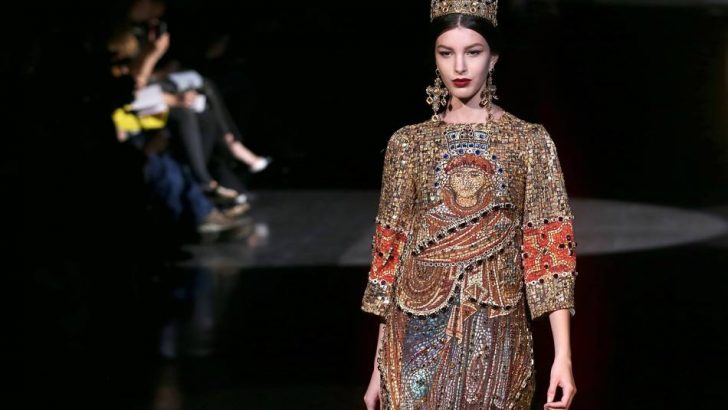This is the season for clearing out our winter wardrobes, and digging out spring and summer clothes: a task which can prompt many reflections on our lifestyles and homespun philosophy about sartorial indulgence.
As I unzip the bags full of seasonal apparel, I wonder just how much time, money and effort is spent in the pursuit of vanity. Why do I have so many clothes? And why do I keep buying more? Vanity, vanity, all is vanity!
Or is it? Aren’t the arts of presentation and costume seen as a signal of the selves we wish to be, or to aspire to? Isn’t putting on fresh raiment considered a symbol of respect and even, possibly, purity in the Gospels?
Certainly, Donatella Versace, sister of the slain Italian couturier Gianni Versace – and now the guiding light of the Versace brand – considers that costume and fashion are very much part of Catholic aesthetic tradition.
On May 10, at the famed Metropolitan Museum of New York, Donatella will open a dazzling new exhibition called ‘Heavenly Bodies: Fashion and the Catholic Imagination’. The exhibition will feature “Catholic-inspired” fashion from Versace, Balenciagia, Valentino, Christian Lacroix, Dolce & Gabbana and Chanel.
Orphanage
I knew that Coco Chanel had taken her renowned black-and-white patterns from the convent orphanage in which she grew up (and where she learned to sew), but I hadn’t realised there was such a wide span of ‘Catholic couture’!
Donatella says there is. She and her brother Gianni grew up “very religious” and that “we knew how important Catholicism was to people”. Their mother was a strong believer and today Donatella is, she told Luke Leitch in the Economist’s culture magazine 1843, closer to the Church than Gianni could ever have imagined.
The Vatican is supportive of the exhibition and is sending 50 precious ecclesiastical garments, which, Donatella says, shows that “Catholicism is more in tune with the times”.
Yet Catholicism has always had an aesthetic side – witness the gorgeous costumes of Renaissance courts. I’d love to whizz off to Manhattan and see this stunning Versace-led exhibition, but I still wonder if my wardrobe-full of (somewhat cheaper) clothes is still a tribute to vanity?
Leo Varadkar wants to introduce a new public holiday commemorating ‘Republic Day’, when this country became a republic in 1949. Would that be healing or divisive? Eamon de Valera was against declaring the 26 counties a Republic as he feared it would create deeper breeches with the North: he also thought Ireland should retain some link with the Commonwealth. Perhaps Leo should set up a Citizens’ Assembly about it?
The whole truth
We are not allowed to call individuals “liars” in print, unless we can prove – in a court of law, if need be – that the person has been seriously mendacious. To call someone a “liar” is to impugn their character and reputation.
However, on social media, anything goes. When I mentioned in a Tweet that I had witnessed an abortion at 23 weeks’ gestation, at a London hospital, and that it was one of the most gruesome experiences of my life, I was called “a liar” by pro-choice Tweeters. It was said that my witness was “b*******”; I was described as “nuts”; it was claimed I got my information from “crypto-Christian”, unreliable websites and not from my own two eyes. One Linda Robbins put up a cartoon image of the fibbing Pinnochio next to my name. Mind you, at least this Linda Robbins was using a real name: most of those claiming that what I said was a falsehood were hiding behind pseudonymous hashtags.
I can attest and prove in any court of law that this was what I witnessed, and that I am not lying about what I saw. But the accusations on Twitter go around the world like Ariel, and I have little redress against being quite unjustly branded a liar.
Yet I believe that a lot of the abusive anger on Twitter from pro-choice sources is really rooted in distress. In their hearts, most of them know what occurs at a 23-week abortion, and their way of coping with this extremely upsetting fact is to lash out at the truth, and anyone who speaks it.


 Mary Kenny
Mary Kenny Fashion from the 'Heavenly Bodies: Fashion and the Catholic Imagination' exhibition
Fashion from the 'Heavenly Bodies: Fashion and the Catholic Imagination' exhibition 